10Fold asked Marketing Executives at Tech Companies about How They Plan their Content Budgets, Frequency, Development and Measurement. CEO Susan Thomas on What Marketers Can do to Stand Out
You need to know what everyone else is doing so you can do it better. ‘Content’ has been a keyword being thrown around for some time now and we’re convinced that is is pivotal to your marketing plan. But just what are marketers doing with their content budgets? 10Fold’s research decided to find out how much content, the quality and authors behind it, delivery, frequency and most importantly the efficacy of this content plan. It’s a good launch board to compare notes.
For the survey, 10Fold spoke with 176 US technology marketing executives with budget and oversight authority for content in their companies. The primary research goal was to capture hard data about the role of content as part of the marketing plan. In addition, the research investigated specifics around content creation such as budget, channels, resources, metrics, media type, and key challenges. 10Fold Communications is a high-tech integrated marketing and public relations agency
Number Crunching
- 75% will generate 3 times or more times than last year
- 32% release content daily or hourly
- 99% will use third parties to create at least 25% of content
- 42% will spend $250,000 or more on content in 2017
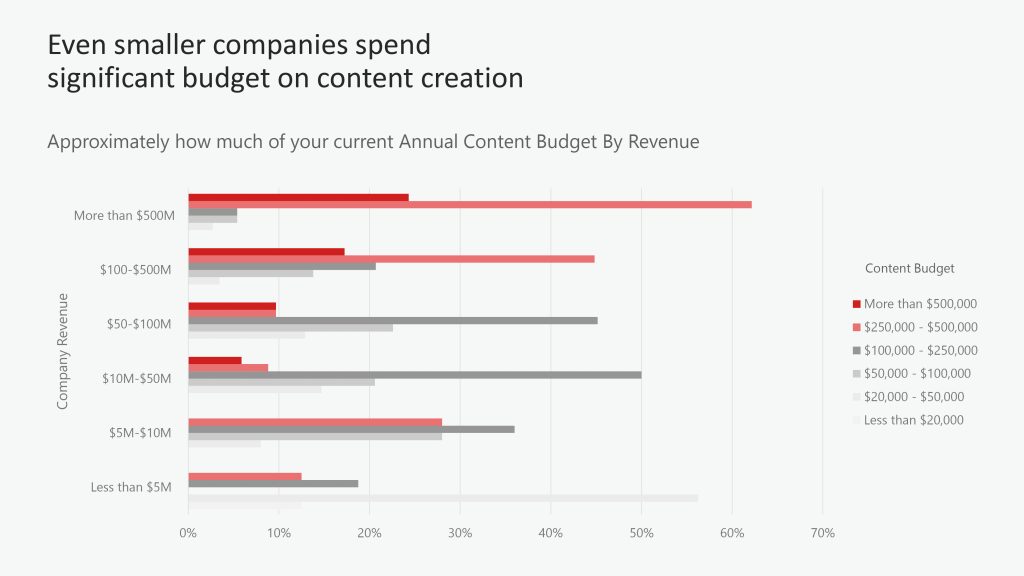
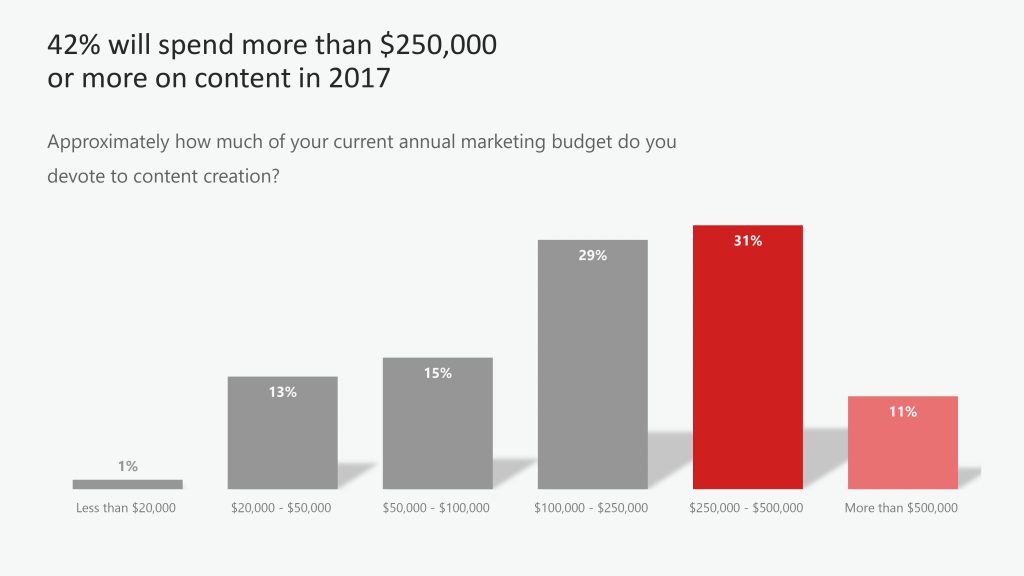
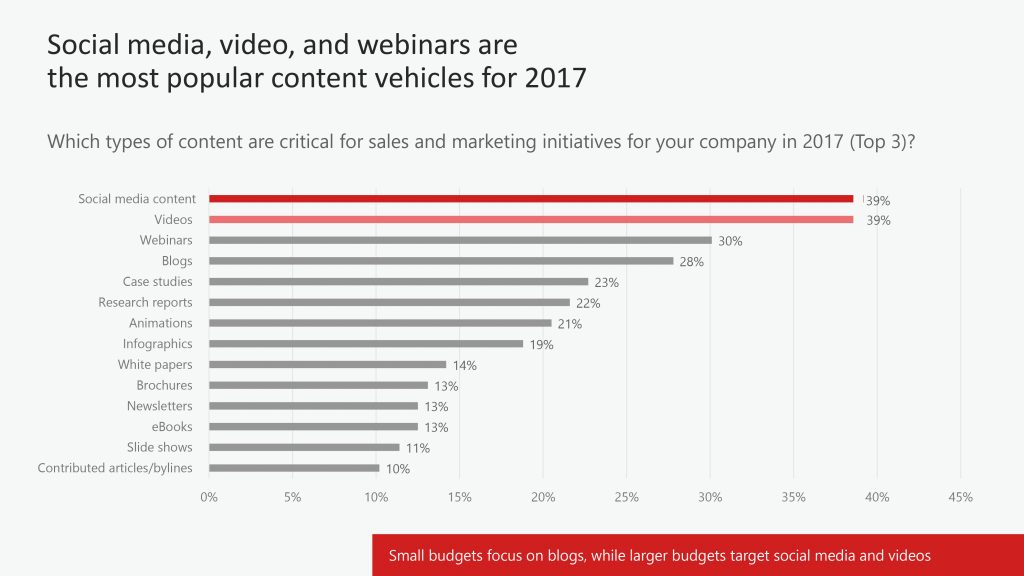
Read More: The Holiday Digital Shopping Journey: Trends for Thanksgiving, Black Friday & Cyber Monday
Key Findings
- Domain expertise is the top barrier to creating quality content
- Social media, video, and webinars lead content vehicles for 2017
- 32% release content daily or hourly
- Most companies use third parties to create at least 25% of their content
- The very large and very small companies are most likely to outsource 100% of their content
- 83% state 3rd-party created assets are at least above average Social media, video, and webinars are the most popular content vehicles for 2017. social media and videos tied at 39% while webinars and blogs were a quick second
- Small budgets focus on blogs, while larger budgets target social media and videos

We spoke to Susan Thomas, CEO, 10Fold about how marketers are meeting the challenges of content;
Lack of subject matter expertise seems to be one of the most common challenges. How are teams looking to rectify this?
Susan: I think companies are prioritizing and seeking out marketing staff, contractors and agencies that not only do a great job creating content, but also have specific experience creating content for their industry. This is particularly important when their industry is complex and / or highly technical.
What tools are commonly used to measure effectiveness of content?
Susan: The most common tool used to determine how content is performing is still the basic Google website analytics (things like referring site statistics). However, a decent number of respondents also suggested they were using marketing automation platforms (although we didn’t ask for specificity about which platform they were using). What was most surprising related to content effectiveness is that the vast majority of respondents said they ask the sales team and / or their customers if the content is effective.
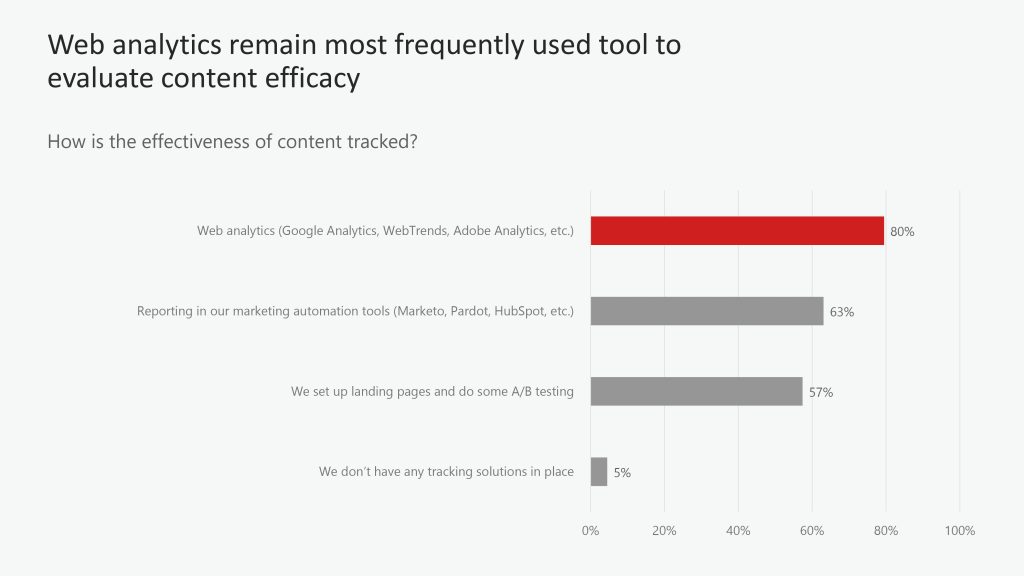
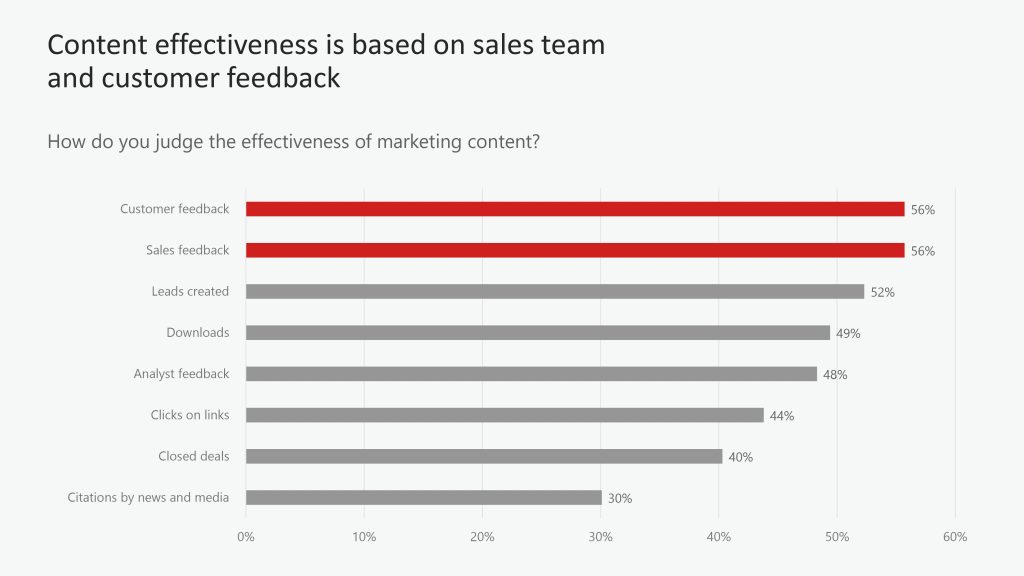
Should marketers be looking at competitor’s content strategies while designing their own?
Susan: At 10Fold, we believe it is really important to see what already exists and do qualitative and quantitative research on prior campaigns. Not only do we want to know what works and what doesn’t, but we want to make sure we don’t propose a “me too” idea that isn’t differentiated. To find the white space, you have to do your research.
Were there insights that surprised you during their survey?
Susan: There were quite a number of insights, and the surprises likely depend on your understanding of the process and how deep you want to dive. Here are a few that I thought were significant:
- At a basic level, we knew content was increasing in importance – but we were surprised that the majority planned to increase the amount of content they delivered by 300% next year. And, nearly a third plan to deliver content hourly and daily.
- Another area of interest was how people measured the effectiveness of the content – most still report on content performance by using basic website analytic tools that are free and available from Google. Many also rely on customer feedback and sales team feedback. That’s a great reminder that no matter how far technology has come, the adoption curve is a real consideration – and we have to be ready to support customers that may not have sophisticated tools.
- I was also fascinated by the differences in content strategy based on geography. For example East Coast companies prefer to create content with their own staff, and West Coast companies nearly always outsource the majority of content to an agency or contractor.
Recommended Read: Uberflip Reveals Meaningful Content Experiences Positively Influence Marketing and Sales Conversions











